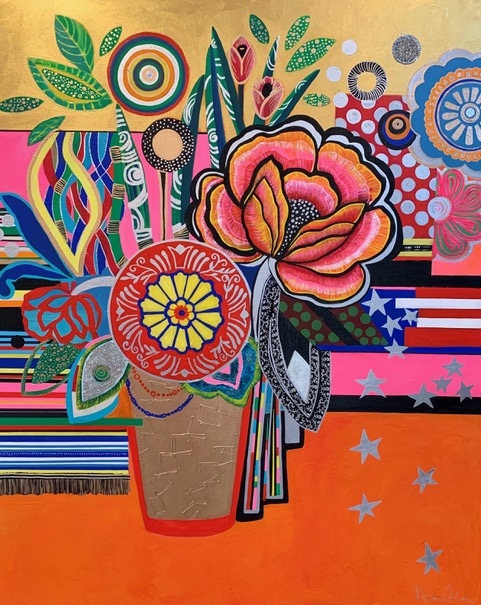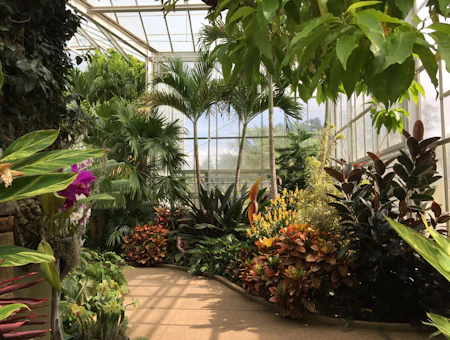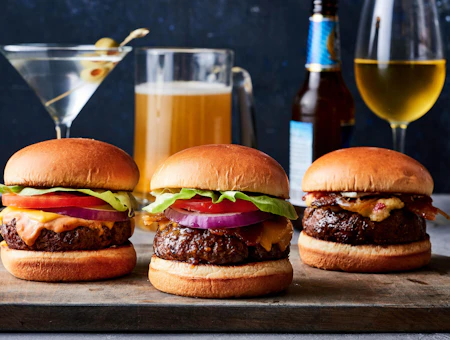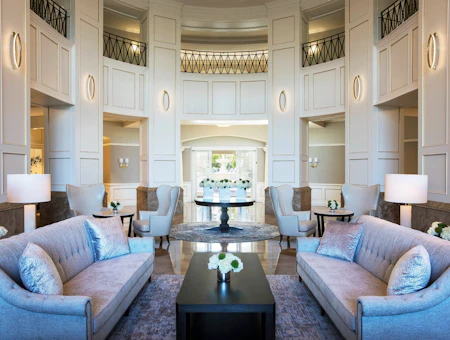Painting During a Pandemic: Charlotte Muralists Use Art to Communicate
From art on breweries to schools and streets, these Charlotte muralists won’t let COVID-19 stop them.
by Jessica Swannie

COVID-19 is affecting not just retail and restaurants, but also local artists, musicians and muralists.
Charlotte’s muralists are known for creating both photo-worthy art and spaces dedicated to deeper discussion and change. While some muralists are experiencing less work or postponed projects, others are seeing an increase in demand for artistic work. However, both groups agree: It’s important to support art, and use art as a medium for positive change.
Some: More COVID Equals Less Work
Rosalia Torres-Weiner, the muralist behind Red Calaca Studio, documents the stories of Charlotte’s LatinX communities through her art. Her work is featured in the permanent collection of the Smithsonian Anacostia Museum and has been exhibited in venues including the McColl Center for Art + Innovation, Levine Museum of the New South and the Mexican Cultural Institute in Washington, D.C.
Due to the pandemic, she’s found it difficult to work with the Latino community.
“Much of my work is based on stories about my Latino community. COVID has kept me from working in person with them, and it is challenging to contact them via Zoom, phone or other platform,” Torres-Weiner said. “It is very frustrating because this pandemic is when my LatinX community is in need of the arts, as schools are closed. I listen to the scientists to stay home, but at the same time, I wish that I could provide them an art kit to help survive.”

Torres-Weiner was running a program that brought the arts to underserved areas and the digital arts to senior centers throughout the city.
“I’ve had to put that program on hold, and may have to cut it short due to funding constraints,” she said. “Several of my public murals have been postponed or canceled.”
Currently, Torres-Weiner is working on a series of paintings called “The Dreamers” that features DACA students and incorporates canvas work with digital stories accessed via an augmented reality app, allowing her to interface with students virtually.
Others: More Work Amid COVID
While some muralists are experiencing a decline in commissions or difficulty reaching the right communities during this time, others are finding that COVID created more of a demand for creative work.
Dammit Wesley, a local muralist known for his work that showcases the Black experience through artistic installments, is currently working on a series of race-related murals and exhibitions that will pop up in the Carolinas soon. You can also see his work at the Black Lives Matter mural on Tryon Street.

“COVID has been a bit of a blessing,” Wesley said. “With people spending more time in their homes, I have seen a spike in commissions and the purchasing of home goods. I really have to get creative now when it comes to pushing sales and experiences.”
Wesley said he’s pursuing his next projects “aggressively.”
“COVID has taught me to be ruthless about getting what I want. Everyone and everything were crippled by this mismanaged mess of a pandemic. The playing field has to be somewhat leveled,” Wesley said.
Muralist Matt Hooker, whose work is everywhere from NoDa to Plaza Midwood to the Black Lives Matter mural, was working on projects for both the Carolina Panthers and the Charlotte FC soccer team, but both were put on hold pre-pandemic. However, you’ll still find him working on projects around town, including a restaurant in Ballantyne.
Dari Calamari, who recently painted the “R” in the Black Lives Matter mural, also has a mural on South Mint Street, and is featured in a mural on Lyon Street. Since the pandemic hit, Calamari has been busy creating meaningful art around town. She’s currently painting a wall at Northridge Middle School with other muralists that took part in the Black Lives Matter artwork.

“COVID-19 hasn’t affected my career. Nothing that I was working on was put on hold because of COVID-19,” Calamari said. “Art is my core and the constant in my life, and no matter the external circumstances, I continue to make art for myself and on my own terms throughout whatever is happening in the world.”
For muralist Sloane Siobhan, the pandemic put a few shows on hold in LA that she planned to attend, but she’s kept busy throughout the crisis. Siobhan began her artistic training at the early age of four, and has seen success since. Her work has been displayed in both the Harvey B. Gantt Museum for African American Arts + Culture and the Mint Museum. You’ll also recognize her “Fly Girl” mural, which was recently completed on E. Trade Street.

“I just finished up a mural at a local bar and lounge in downtown Las Vegas called the Velveteen Rabbit. I also have a few commissions I'm finishing up. Luckily, the commissions haven't slowed, but surprisingly picked up during the pandemic,” Siobhan said.

Muralist Nick Napoletano recently completed the “2020 Vision” mural at Red Clay Ciderworks and the mural to honor hospitality and tourism employees, which lives on Rampart Street near Sycamore Brewing. He said that although COVID hit, he was in a privileged position in the sense that he usually keeps a schedule booked six-eight months in advance.
“So when COVID hit, I more or less moved a lot of my travel around and rearranged my schedule. For me, I was lucky. I feel like a lot of artists I know were affected,” Napoletano said.
New Ways to Engage in Art
While the pandemic continues to create a “new normal” around town, Charlotte muralists are finding new ways in which to engage with their art and the local community.
Wesley worked on the Black Lives Mural on N. Tryon Street. He completed the Strange Fruit mural on N. Davidson. He’s also been active in online forums and discussions about the intersections of art and race.
“I have opened up my studio space, BLK MRKT CLT, for local artists to work in during the pandemic,” he said.

Wesley has also partnered with Heal Charlotte, It Ends Now and Generation Genesis to host a Durag Fest Freedom March in celebration of Black lives for Junteenth.
Much like Wesley, Calamari has also collaborated with other artists throughout town.
“I am continuing to live and create and do what I was before — letting one venture and opportunity lead to the next,” she said. “I have shown some more of my process, so people can get a sense of what it’s like to create the pieces.”
Both Torres-Weiner and Siobhan have been using social media to engage with the local community. Torres-Weiner created a virtual art gallery and has sold a couple of pieces through her shop on Instagram, and Siobhan created incredible custom playing cards, Akasha, that help keep her family afloat during these challenging times.
Support Your Local Artists
While these muralists have been seeing success throughout the pandemic, it’s important to continue to show support so they can continue to create.
“The arts community acts as an uncensored public voice. Our work embodies the message of the people around us. The local community can help by providing walls, space, property, supplies, and of course money,” Wesley said. “I cannot stress enough, artists need money. Murals are very costly and time-consuming. Without the community’s financial assistance, work would be next to impossible to complete.”
Siobhan recommends supporting artists by “investing in them completely, without haggling or devaluing them.”
“The art community is the breath and blood of a city, and Charlotte is no exception. Where there is art, there is life. NoDa and Plaza Midwood are two prime examples of how artists literally built neighborhoods up, and ironically were evicted from those spaces,” Siobhan said. “Offering spaces to create for little to nothing is another great way to support the art community. If we don't have spaces to make art, it feels like a slow painful death of our imagination and creativity.”
Hooker agrees.
“Beyond the fact that it’s been my career outlet for years, I feel it’s important on a bigger level to showcase the talent that otherwise may be overlooked,” Hooker said. “Charlotte’s identity hasn’t historically been one of an artistic city. I don’t feel like that needs to be the case anymore.”

Art as a Medium for Positive Change
This year has seen the polarization of society, from pandemic-induced woes to racial tensions and politics. Yet, the art in Charlotte has brought people from different walks of life together.
Local muralists don’t just create murals with a message, they create murals to induce positive change and introduce new perspectives through an artistic form of communication.
“Art is the bridge to the mind & heart, and it helps convey social movements where stiff articles may not sway those stuck on the wrong side of history,” Siobhan said. “Art can tell a story, that can feel more inclusive. Art speaks to the soul, it breaks through the divisions and distractions.”
Torres-Weiner holds that art creates a connection to a cause.
“Art raises awareness, reveals new perspectives and can also create a connection to a cause. It serves as a means of documenting important events that impact society and cultures. Art is a uniquely human form of communication and expression, and it’s an essential part of our existence,” Torres-Weiner said.
For Napoletano, art has an incredible power to affect people — their states of consciousness, their moods, their sense of self.
“COVID is a space where there’s a lot of opportunity to make really dynamic change. There’s all these things bubbling up to the surface right now that create a window for us to re-address things that should’ve been addressed long ago,” Napoletano said. “I think it's really important to remind us of what it means to be human, to be empathetic and considerate of other people. And to remind people to be the best versions of themselves.”
Calamari believes that art brings people together by allowing for the expression of visions amidst the events happening in the world.
“Art is important in my life so naturally; it interweaves with issues on a larger scale. When we look back at events from the past we do look to see what art was being made at the time alongside it,” Calamari said. “Artists don’t disappear during important moments, they’re right alongside it, tools in hand, creating amidst it all.”
And above all, murals unite us.
“The BLM mural on Tryon quite literally brought people together,” Hooker said. “I realized a few hours into working that day that I hadn’t been around more than maybe three people in several weeks. The vibe was so positive and was like a magic elixir during a time of terrible uncertainty and anxiety. The size and placement of murals is undeniable. You’d have to work hard to ignore them. They can be high-octane vehicles of messages in ways that a lot of art can’t compete with.”
“Symbols create hope. We need things, ideas that are bigger than us that we can latch onto in times like this,” Wesley said. “Art is powerful when wielded correctly.”










